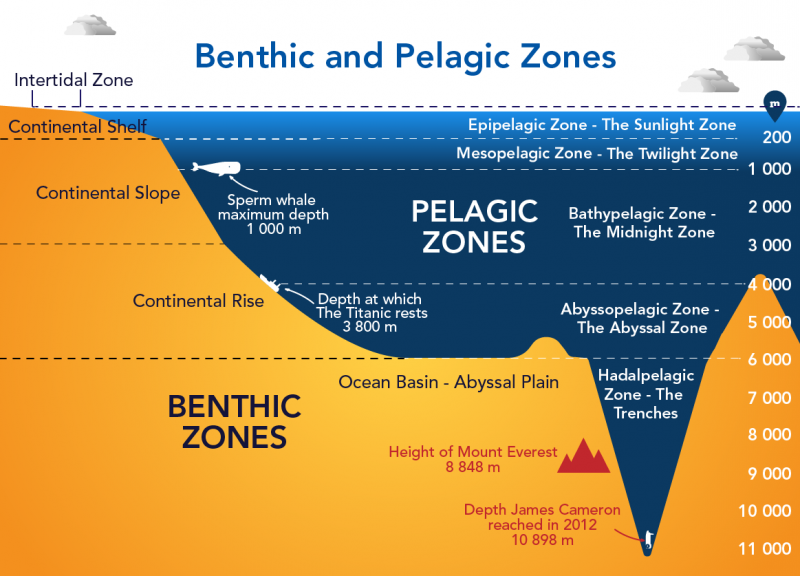Rapid Fire
Deep Seafloor Exploration
- 14 Jun 2025
- 2 min read
A study has revealed that about 99.999% of the Earth’s deep seafloor, which covers two-thirds of the Earth area below 200 meters depth, remains visually unexplored.
- More than 97% of dives were conducted by just 5 countries (US, Japan, New Zealand, France, and Germany).
- Exploration has been biased toward geomorphological features like ridges and canyons, while vast abyssal plains, which cover the majority of the seafloor remain under-studied.
Deep Ocean:
- The deep ocean refers to the part of the ocean at depths greater than 200 meters, where sunlight no longer penetrates .
- The deep ocean is cold, with an average temperature of just 4°C, and is subjected to extreme pressures ranging from 40 to over 110 times that of Earth's atmosphere.
- The deep ocean region lacks photosynthesis due to absence of light and is nutrient-poor, yet life thrives in its harsh conditions.
- The mesopelagic zone (200–1,000 m), hosts about 90% of global fish biomass. It includes species like fish, squid and krill.
- India launched the Deep Ocean Mission (DOM) in 2021 to explore and sustainably harness deep-sea resources.
- Significance of Exploration: Exploration of the deep ocean offers potential sources of energy (such as oil, gas, methane hydrate, and ocean currents), a promising reservoir for new antibiotics, the discovery of polymetallic nodules, and critical insights into understanding, predicting, and mitigating climate change.
Marine Snow
- It is a steady fall of organic matter, like dead plankton, fecal pellets, and mucus from the ocean surface to the deep sea. It sustains deep-sea life in the absence of sunlight and plays a crucial role in the carbon cycle by transporting carbon to ocean depths, aiding long-term sequestration and climate regulation.
| Read More: Deep Ocean Mission |







